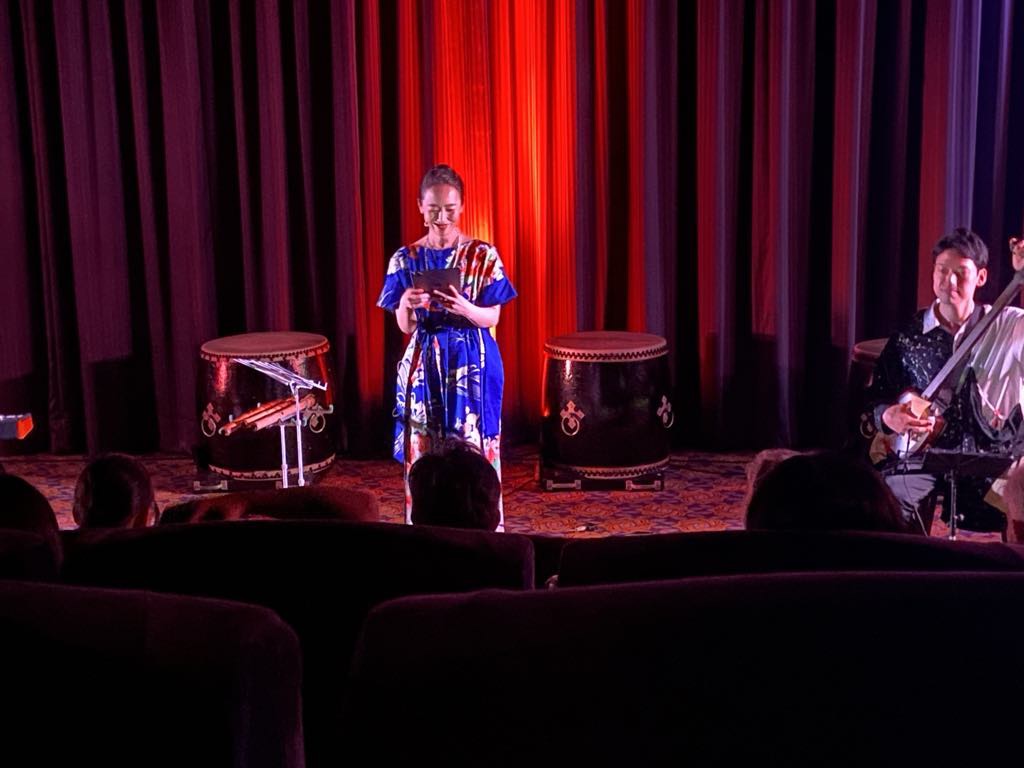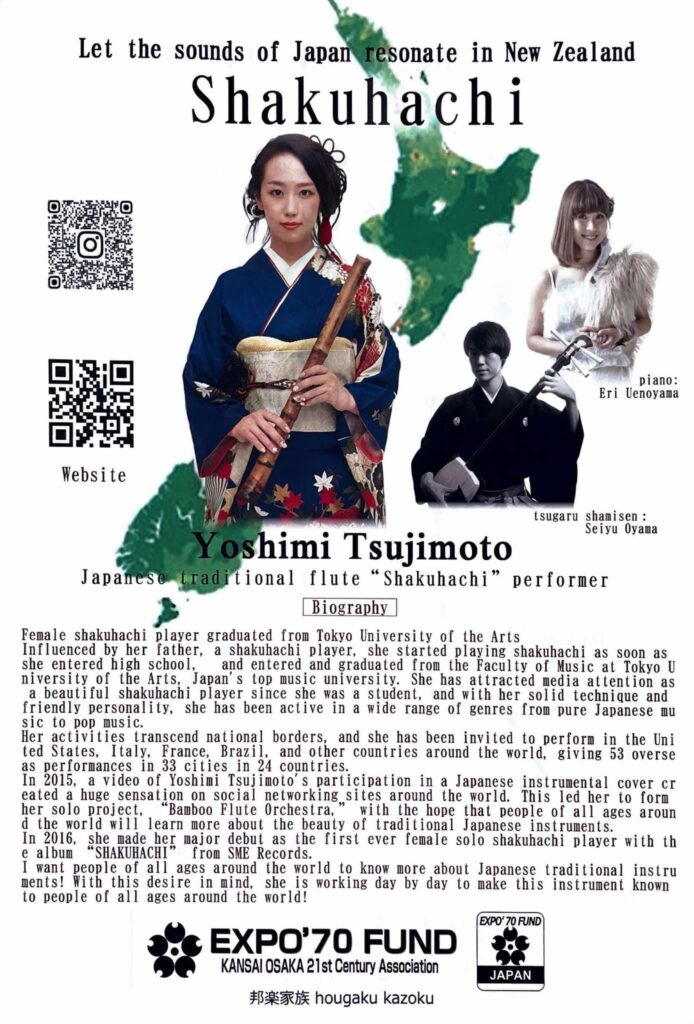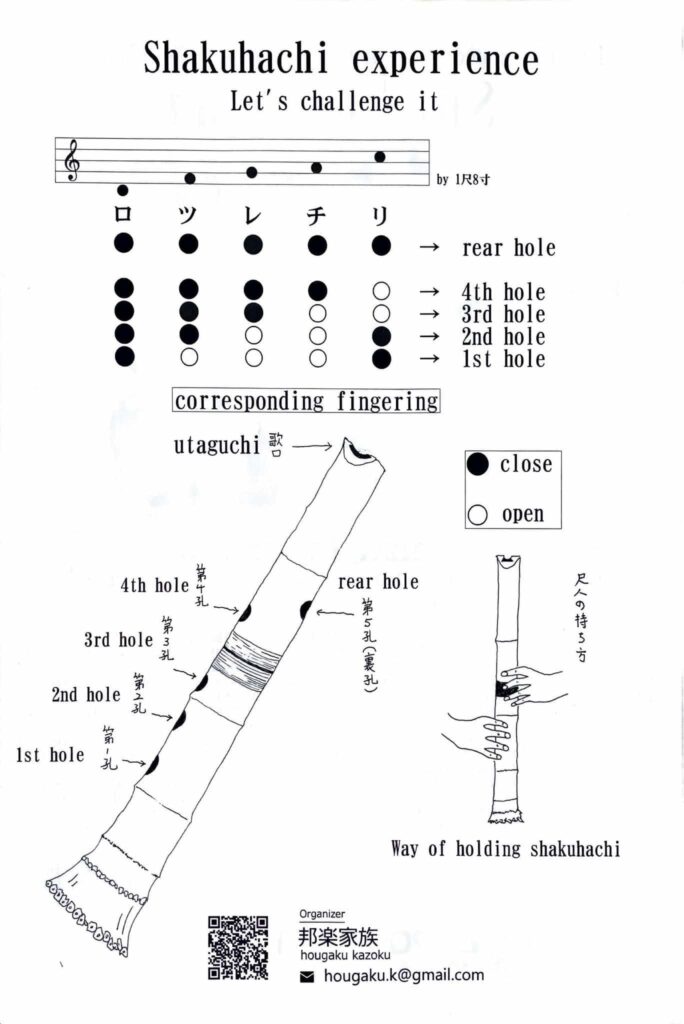
Yoshimi Tsujimoto’s shakuhachi concert was held yesterday, February 9, 2025, at The Capitol in Auckland, New Zealand.
This was my first time going to a shakuhachi concert. Drawn in by the tagline “The Sound of the Soul,” I eagerly signed up for this concert and had been looking forward to it.
Following performances of taiko drums and Japanese folk songs, the concert featured Eri Uenoyama on piano, Seiyu Koyama on Tsugaru shamisen, and Yoshimi Tsujimoto on shakuhachi. From the very beginning of the performance, the atmosphere shifted dramatically. There was an incredible dynamism and an amazing sense of comfort.
I was completely immersed in the sound of the soul, the music of the soul, and the deeply resonant performance that touched my heart.


Flyer I received at the event:
Yoshimi Tsujimoto
Biography
Female shakuhachi player graduated from Tokyo University of the Arts
Influenced by her father, a shakuhachi player, she started playing shakuhachi as soon as she entered high school, and entered and graduated from the Faculty of Music at Tokyo University of the Arts, Japan’s top music university. She has attracted media attention as a beautiful shakuhachi player since she was a student, and with her solid technique and friendly personality, she has been active in a wide range of genres from pure Japanese music to pop music.
Her activities transcend national borders, and she has been invited to perform in the United States, Italy, France, Brazil, and other countries around the world, giving 53 overse as performances in 33 cities in 24 countries.
In 2025, a video of Yoshimi Tsujimoto’s participation in a Japanese instrumental cover created a huge sensation on social networking sites around the world. This led her to form her solo project, “Bamboo Flute Orchestra,” with the hope that people of all ages around the world will learn more about the beauty of traditional Japanese instruments.
In 2016, she made her major debut as the first ever female solo shakuhachi player with the album “SHAKUHACHI” from. SME Records.
I want people of all ages around the world to know more about Japanese traditional instruments! With this desire in mind, she is working day by day to make this instrument known to people of all agers around the world!
Beyond her undeniable talent as a musician, her charming personality became evident throughout the concert.
And, she is truly beautiful.
My daughter in her twenties who attended the concert with me excitedly searched her name on her phone, saying, “She’s so beautiful! I can’t believe she’s 37 years old!”
Although she prefaced her speech by saying she wasn’t fluent in English, she confidently conducted the concert in English.
I also learned for the first time about the deep connection between shakuhachi and Buddhism.
She mentioned that this was her first time in New Zealand, and the concert featured an original composition by pianist Eri Uenoyama, inspired by New Zealand specifically for this performance. The piece left a strong impression on me.
As stated in the event flyer’s title, “Let the sounds of Japan resonate in New Zealand” this beautiful sound from Japan undoubtedly continues to echo here in New Zealand.
The New Zealand tour consists of three performances in different cities, with Auckland being the middle stop.
It is truly wonderful how music can transcend borders, connecting people and nature across the vast blue skies and oceans of summer here.
My personal favorite piece was Synchronicity, a composition by Yoshimi Tsujimoto herself.
In Japan, attending a concert like this might be something easily accessible. However, for me, if I had continued living in Japan without the experience of living abroad, I likely would never have come across such a performance.
This concert made me rediscover the profound artistry of Japan’s traditional culture and its power to resonate deeply with the soul.
Not only shakuhachi, but also the sound of the Tsugaru shamisen was remarkable. I thoroughly enjoyed the performances by these young musicians.
I dream of hosting a salon concert at our traditional Japanese-style residence in Kanagawa.
By “traditional Japanese-style residence,” I don’t mean a high-society gathering like those once held in aristocratic mansions. Instead, I imagine a Japanese-style salon concert that values the natural atmosphere and the harmony of everyday life.
I also find myself wondering—if the shakuhachi were played in 432 Hz, would its sound resonate even more deeply with the soul? My imagination is running wild.
I am truly grateful for this wonderful encounter with music that transcends borders.